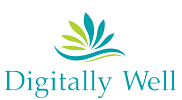
New Year’s is the time for personal and professional resolutions and if making digital wellness a priority is on your list for 2023, you’re certainly not alone. In a recent Forbes article, “The Buzziest Wellness Trends to Watch out for in 2023”, digital detox ranks as a top trending category. As author Nazish (2022) notes, “People are starting to realize that taking social media breaks and disconnecting from technology in general on a regular basis is not only therapeutic, but also attainable as a self-care goal.” Similarly, a Pinterest Predicts report notes that “phone-free self care” is a trending search and forecasts digital detox as a key trend based on these results. In addition, both Country & Town House and Glam magazine noted that digital detoxes are posed to be a major wellness trend in 2023, noting that, “Our increased dependency on smart phones, tablets and laptops is making many people reconsider their relationship with their electronic devices” (Colville, 2022).
The increased realization that technology-use is not sustainable in its current ‘hyper-connected’ state has fueled the need for people to not only want, but need, a digital detox. Technology can make us feel fatigued, anxious, and burned out–not to mention the negative physical effects, such as poor sleep and tech-neck. But detoxing doesn’t mean you have to disconnect for days or partake in a yurt retreat without wifi (unless of course, you want to!). Digital detoxes are fueled by the need to consume technology in ways that are mindful and intentional; therefore, it can be as simple as leaving your phone at home when out for dinner with a friend, limiting app usage, or scheduling tech-free time in your day. Even simple practices, such as muting notifications and automating emails and texts (“I’ll respond on Monday”) can help define healthier communication boundaries, allowing us to rest and re-charge our own batteries.

